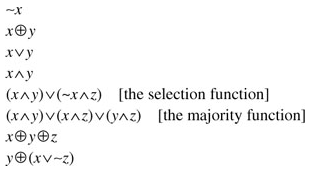Question
For purposes of this exercise, we will define random as having all elements equally likely to be chosen. So a function that selects a 100-bit
For purposes of this exercise, we will define random as having all elements equally likely to be chosen. So a function that selects a 100-bit number will be random if every 100-bit number is equally likely to be chosen. Using this definition, if we look at the function "+" and we have two inputs, x and y, then the output will be random if at least one of x and y are random. For instance, y can always be 51, and yet the output will be random if x is random. For the following functions, find sufficient conditions for x, y, and z under which the output will be random:

Step by Step Solution
There are 3 Steps involved in it
Step: 1

Get Instant Access to Expert-Tailored Solutions
See step-by-step solutions with expert insights and AI powered tools for academic success
Step: 2

Step: 3

Ace Your Homework with AI
Get the answers you need in no time with our AI-driven, step-by-step assistance
Get Started


